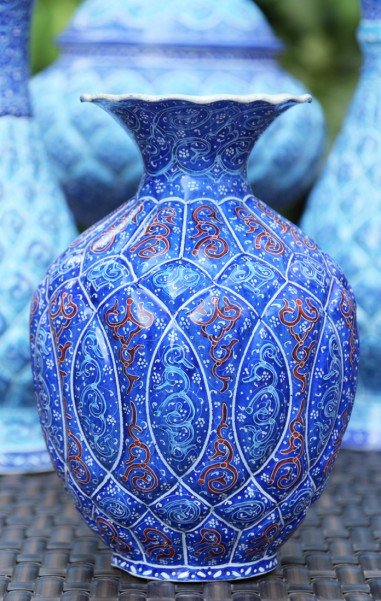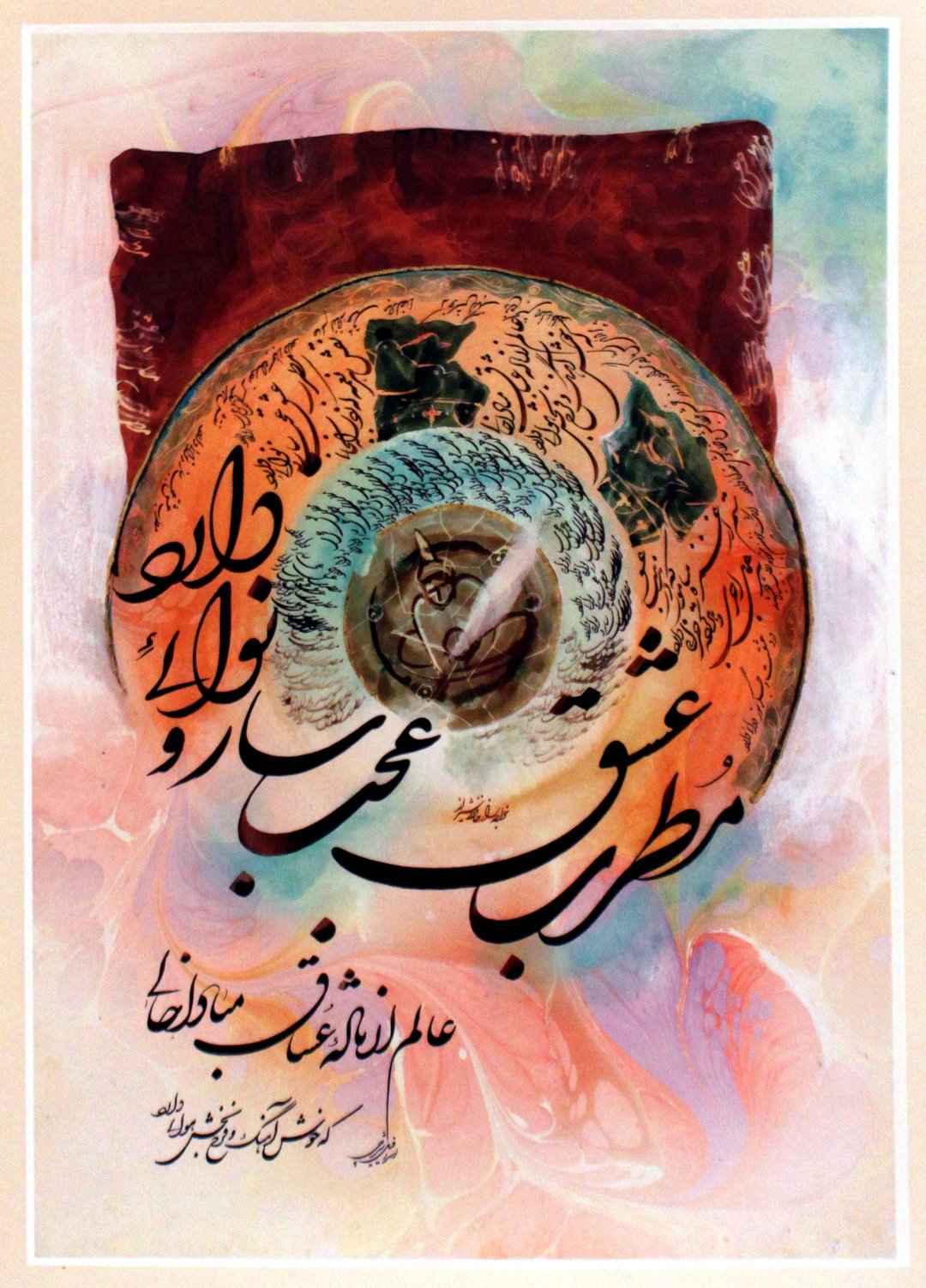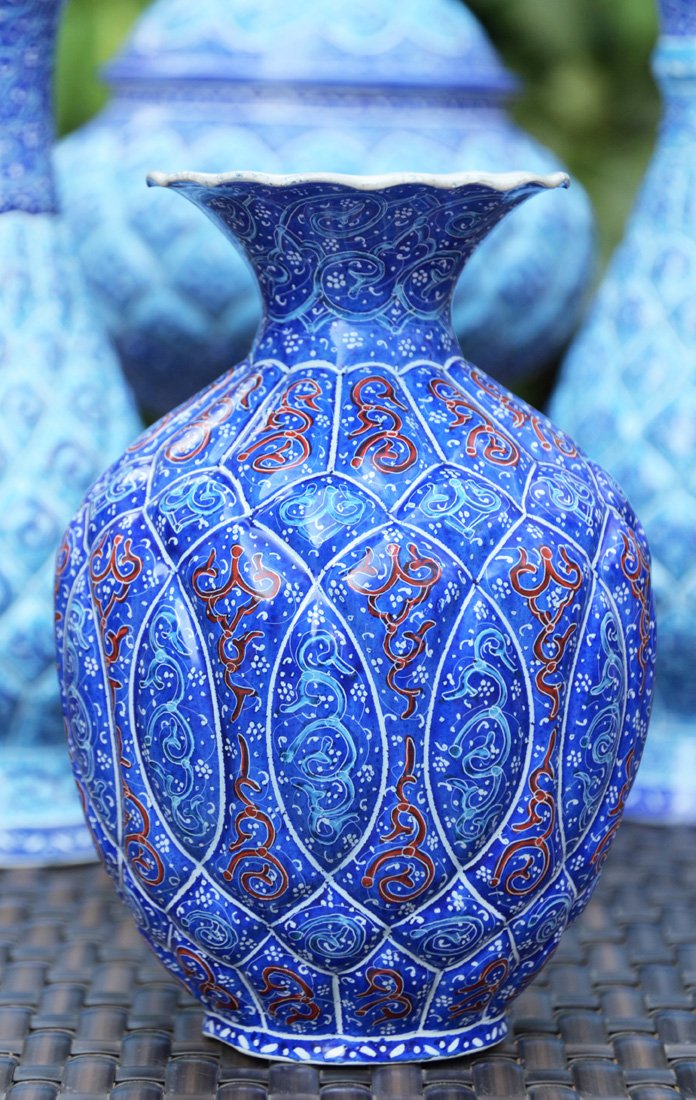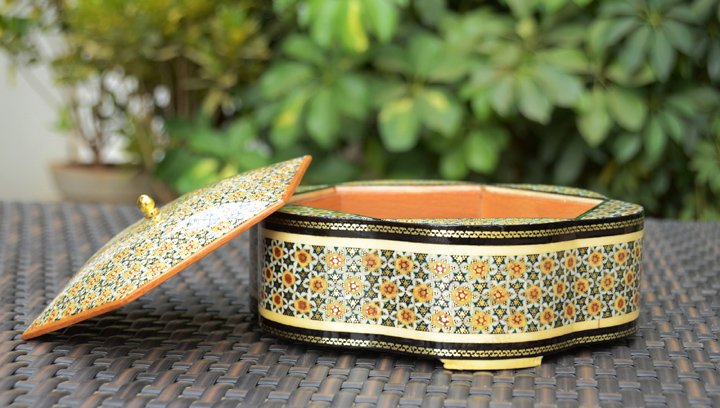Articles features
'Sulh-E-Kul' - Artistic bridges of love from Persia

A rare collection of Persian and Iranian art and culture, comprising the
finest collections from one of the oldest civilizations in the world,
is enthralling visitors at a month-long exhibition in Mumbai.
Titled
'Building Bridges Of Love - Sulh-E-Kul – Peace To All', the expo covers
eras of Khatamkari works, Minakari arts, Persian calligraphy, art
photography and paintings and miniatures. It has been organised at the
Cosmic Art Gallery in collaboration with Ajmer's Chishty Foundation and
Mumbai's Iran Culture House.
"This is a rare expo, spanning the
seven centuries-old Khatamkari works, or metal craftsmanship which is
delicate and meticulous marquetry, with star-shaped incrustation
patterns, and highlighted by thin sticks of different types of woods and
camel bones, and other displays," said Jalpa Vithalani, a cosmic healer
and director of south Mumbai's Cosmic Art Gallery.
At one time,
it was so popular that princes and princesses learnt Khatamkari
techniques like they learnt music or painting. Over seven centuries old,
it is still perennial in Iran's Shiraz and Isfahan areas.
Also
on display is Persian calligraphy, with the 35 letters of the ancient
Iranian alphabet which was artistically expressed on animal skins, or
adorning works of pottery, metallic vessels and historic buildings.
The
collection of renowned Teheran calligrapher Bahadur Baghri on display
are beautiful and simple with each painting carrying the universal
verses/messages which touch the viewers' souls.
An important
component of the exhibition is a special photo feature by Chishty
Foundation Director Haji Syed Salman Chishty entitled 'Journey to Iran
Zameen' with some striking images of Iran, its people, its culture, arts
and history.
The 32-year old Haji Chishty, who is engaged in
practical research on Sufi traditions and their impact on different
cultures and traditions, has lectured around the world on the topic and
made a journey of exploration of Iran when he took the pictures.
"The
underlying message is to promote spiritualism through harmony, peace
and love for all, which was represented by the 11th century saint,
Sultan-ul-Hind, Gharib Nawaz Hazrat Khawaja Moinuddin Hasan Chishty of
Ajmer Sharif," Haji Chishty told IANS.
He is the 27th generation
of 'Gaddi Nashin' of the world famous Dargah Khawaja Saheb - Ajmer
Sharif - and the exhibition of Sufi Arts from around the world was his
brainchild, but held only in Ajmer since 2009, to breathe new life into
the dying Islamic arts.
"This is the first time the Sufi Arts
exhibition is travelling out of Ajmer. With the advent of the digital
era, Islamic art is dying without patronage; the great artists have lost
their relevance and they did not pass on their knowledge to the next
generation," he explained.
Vithalani said that the Sufi Arts
Festival in Ajmer, coinciding with Prophet Mohammed's birthday
celebrations, has now joined hands for the Persian art exhibition.
"Through
the Sufi Arts Festival, we emphasise on understanding Islam from a
creative perspective, which is not just restricted to religious
teachings. Islam is a highly advanced religion and science, of which the
new generation is unaware. Such exhibitions and more planned all over
India soon can create that awareness," Haji Chishty said.
Haji
Chishty's silent but powerful photographs capture different aspects of
peace, love, the culture of Iran and how people and nature blend in that
country, almost like visual poetry. (see Images).
One section
displays the fine art prints of renowned Persian painter and miniaturist
Mahmoud Farshchian, now 85, a native of Isfahan, the cradle of Persian
arts and artists in Iran, currently living in the US.
"Master
Farshchian's beautiful paintings depict a perfect synergy between
mankind, animals and the surrounding nature and how they are
inter-linked, inter-dependent and unified with each other. His paintings
and miniatures are inspired by ancient literature and poetry, but are
blended with modern techniques," Vithalani told IANS.
A lure is
the Minakari collection - roughly meaning colours of heaven - or
enamelling and decorating metals or tiles with colourful and baked coats
with mina glaze, invented by ancient Persians and later spread to
Mongolia, India and other parts of the world.
"This is the art of
painting, colouring and ornamenting surface of metals by fushing
brilliant colours over it, decorated in intricate designs or patterns of
birds, animals, nature, flowers, in rich hues of light blue, green
yello and red," Vithalani elaborated, showing the various breath-taking
exhibits.
At the inaugural last week, Iran Culture House
Director Mahdi Zare said art is one of the most ancient and most
fundamental fields of crystallization and manifestations of human soul.
"Human
activities in art got developed in various disciplines and people in
different historical periods focussed on the artistic productions of
each of these disciplines. These are the direct representation of the
human identity and its compulsive emotional form," Zare told the august
audience.
(Quaid Najmi can be contacted at quaid.n@ians.i







































